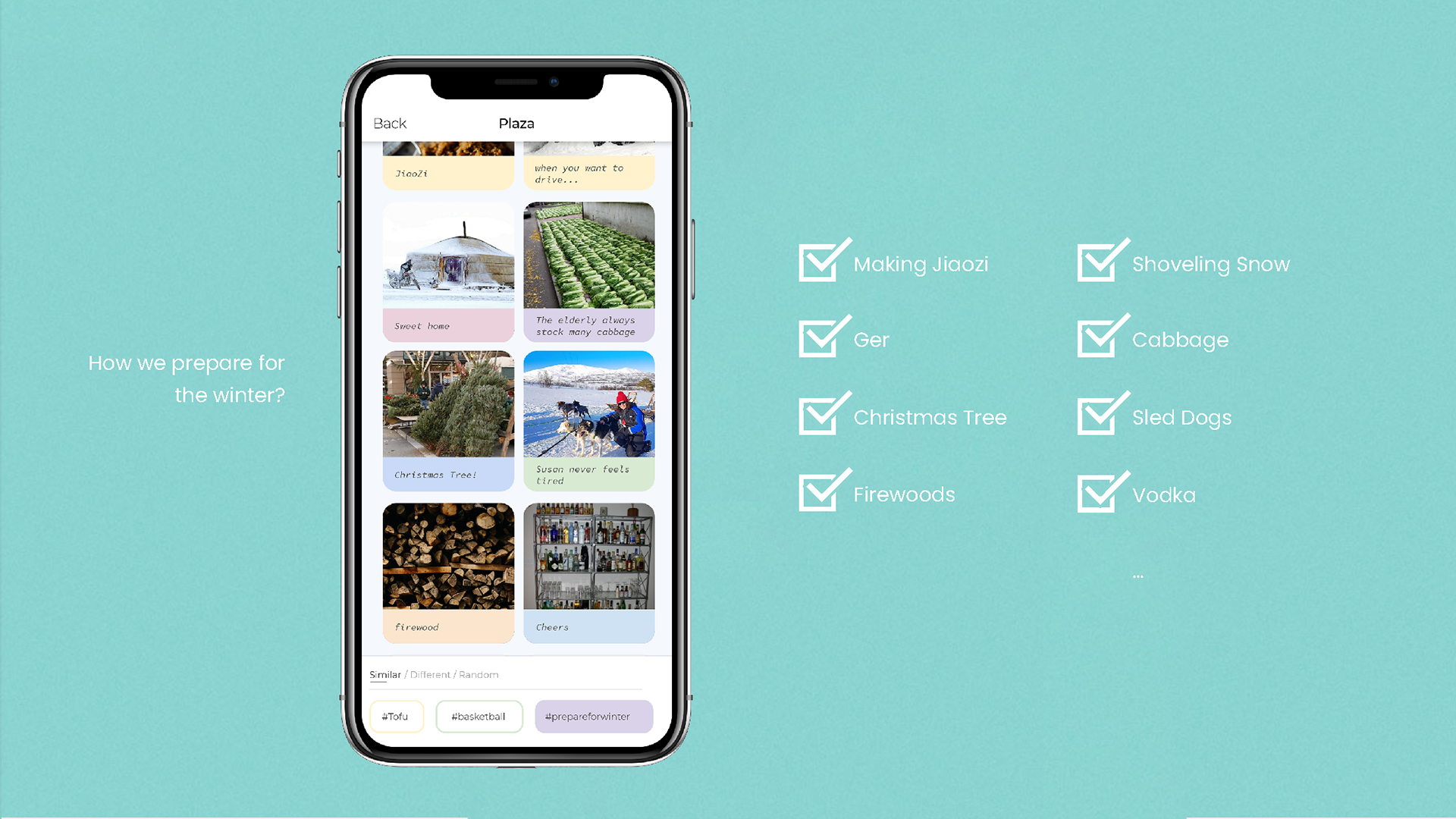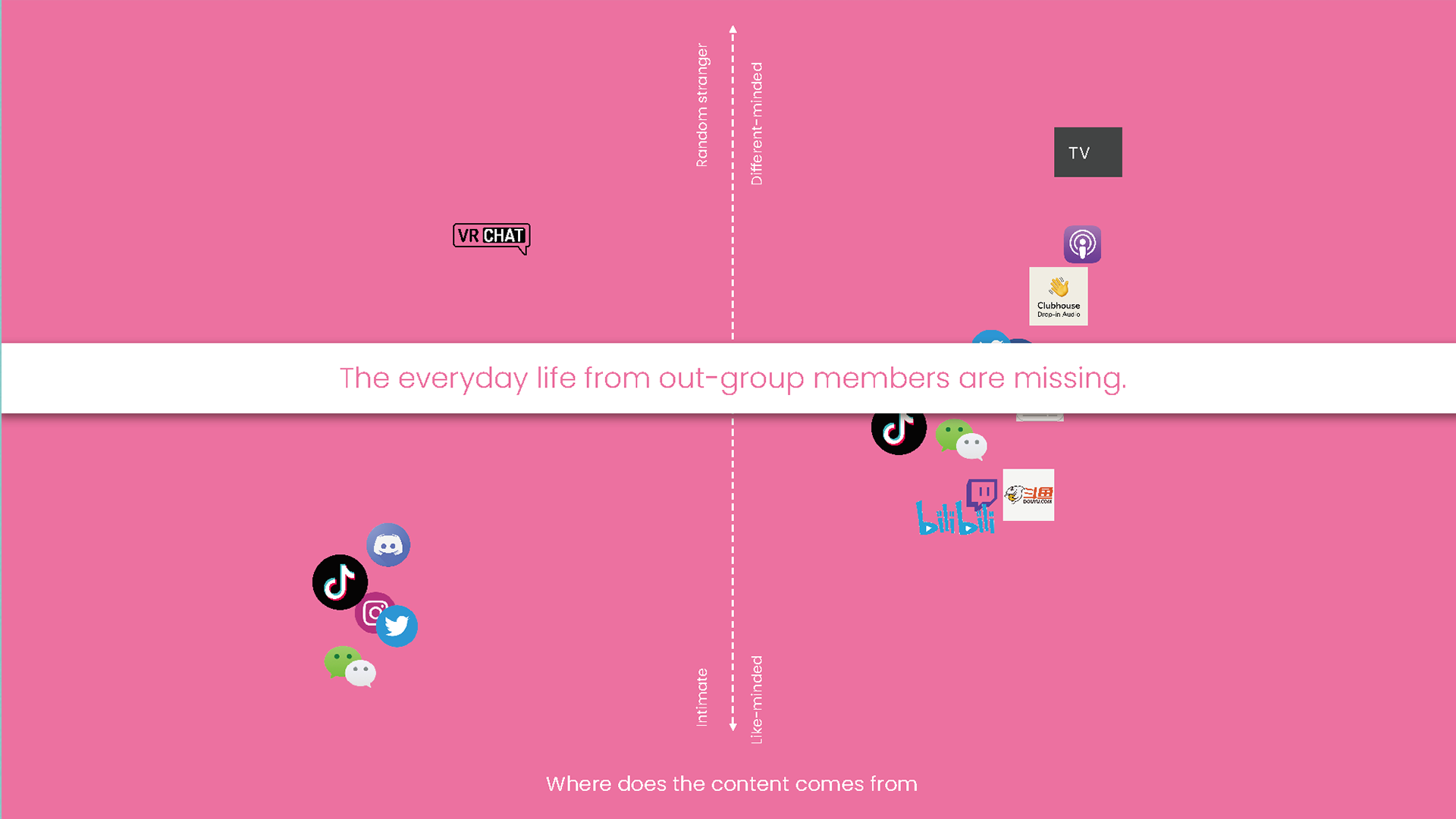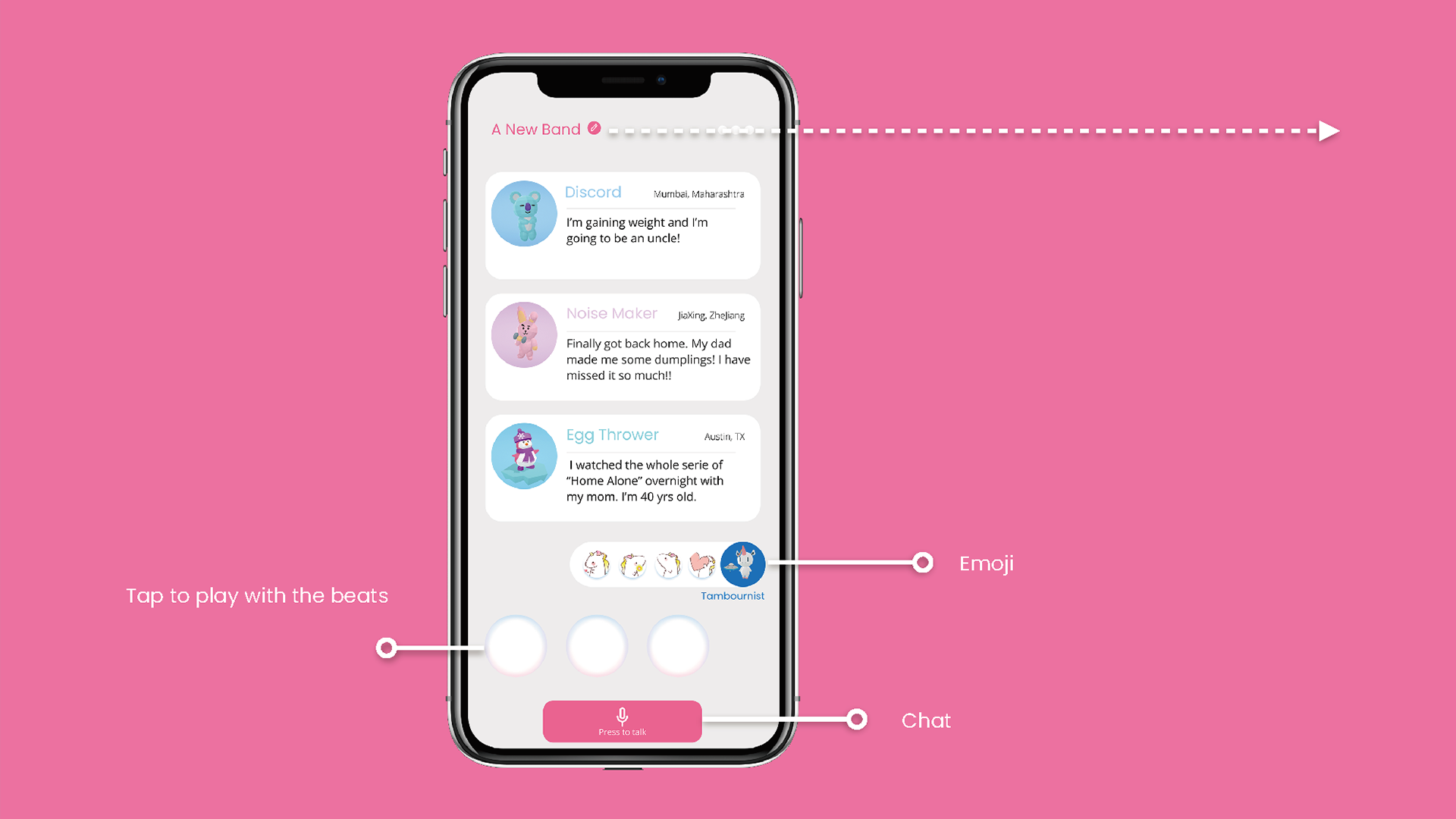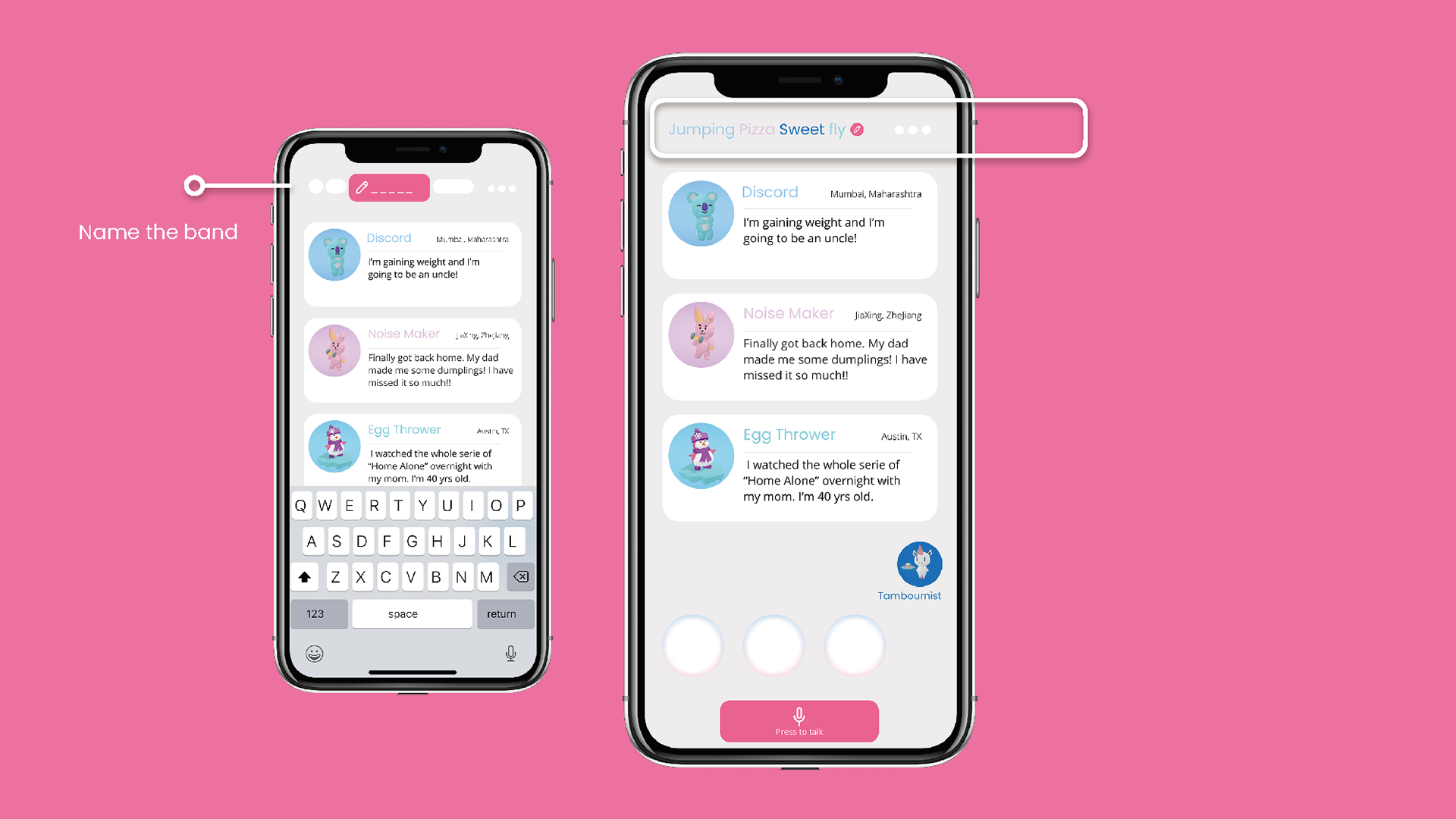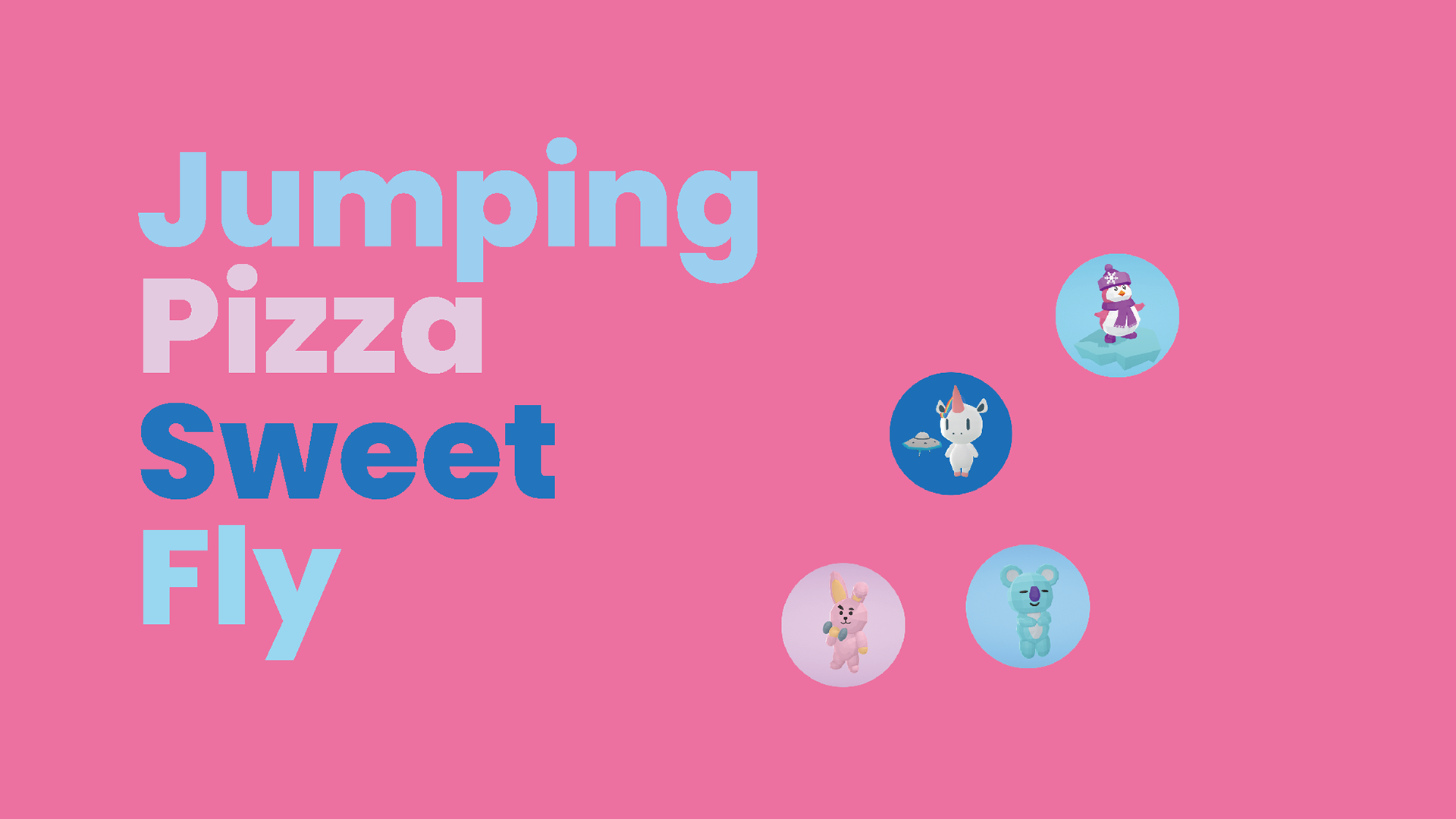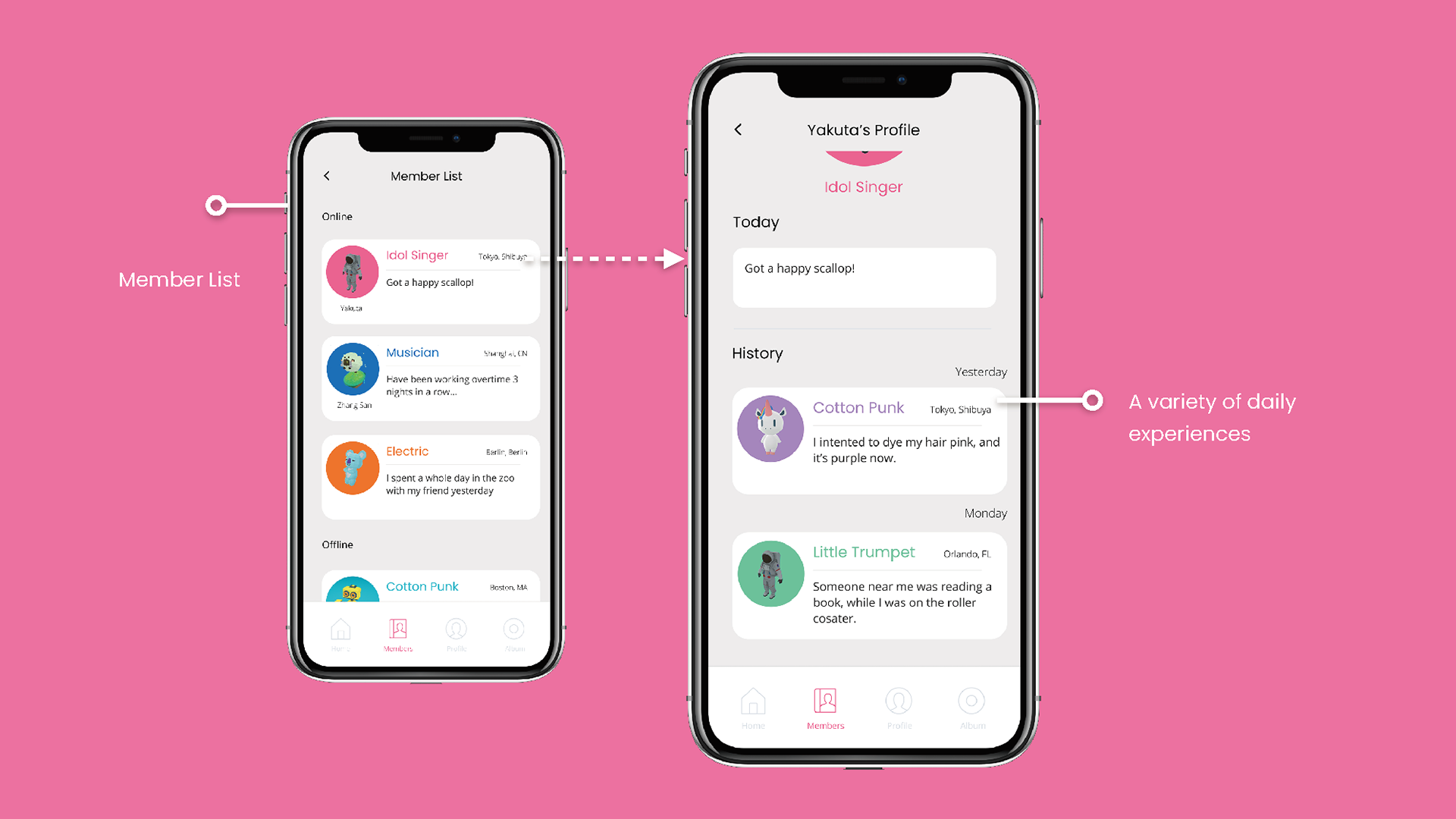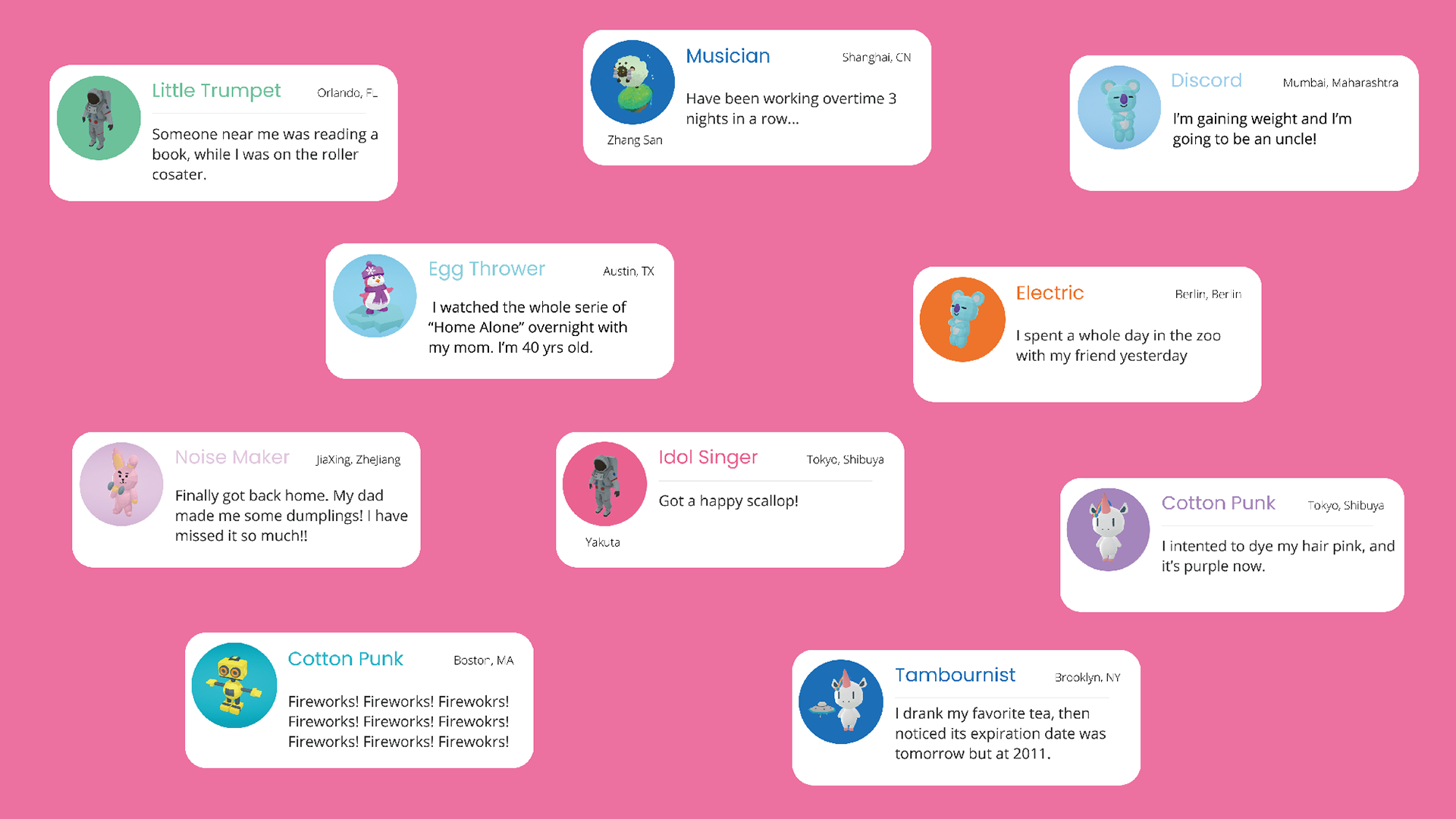Bursting Bubbles: Learning About Others Through Digital Play
Guanghui Bi's thesis, Bursting Bubbles: Learning About Others Through Digital Play, focuses on sparking joyful interactions among individuals—more specifically, creating opportunities for people to appreciate the diversity of others by sharing common interests. The designed products in Bi’s thesis raise the question of how contemporary social media platforms can better facilitate intergroup contact.
Modern-day technology companies earn profits by dividing and polarizing users on social media platforms. As the adverse effects of social categorization, prejudice, stereotyping, and ingroup favoritism are amplified online, the social landscape has the potential to look increasingly dystopian.
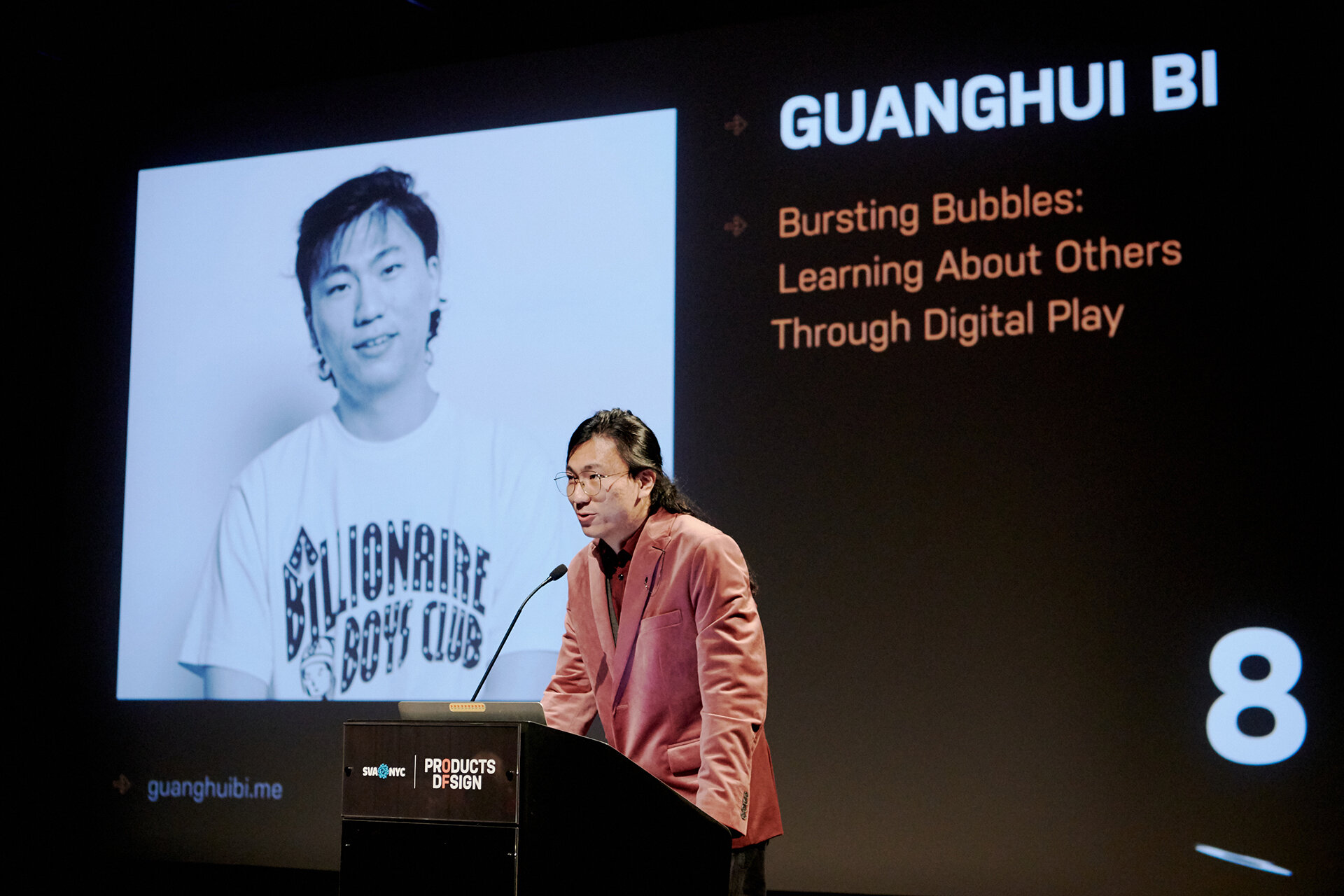
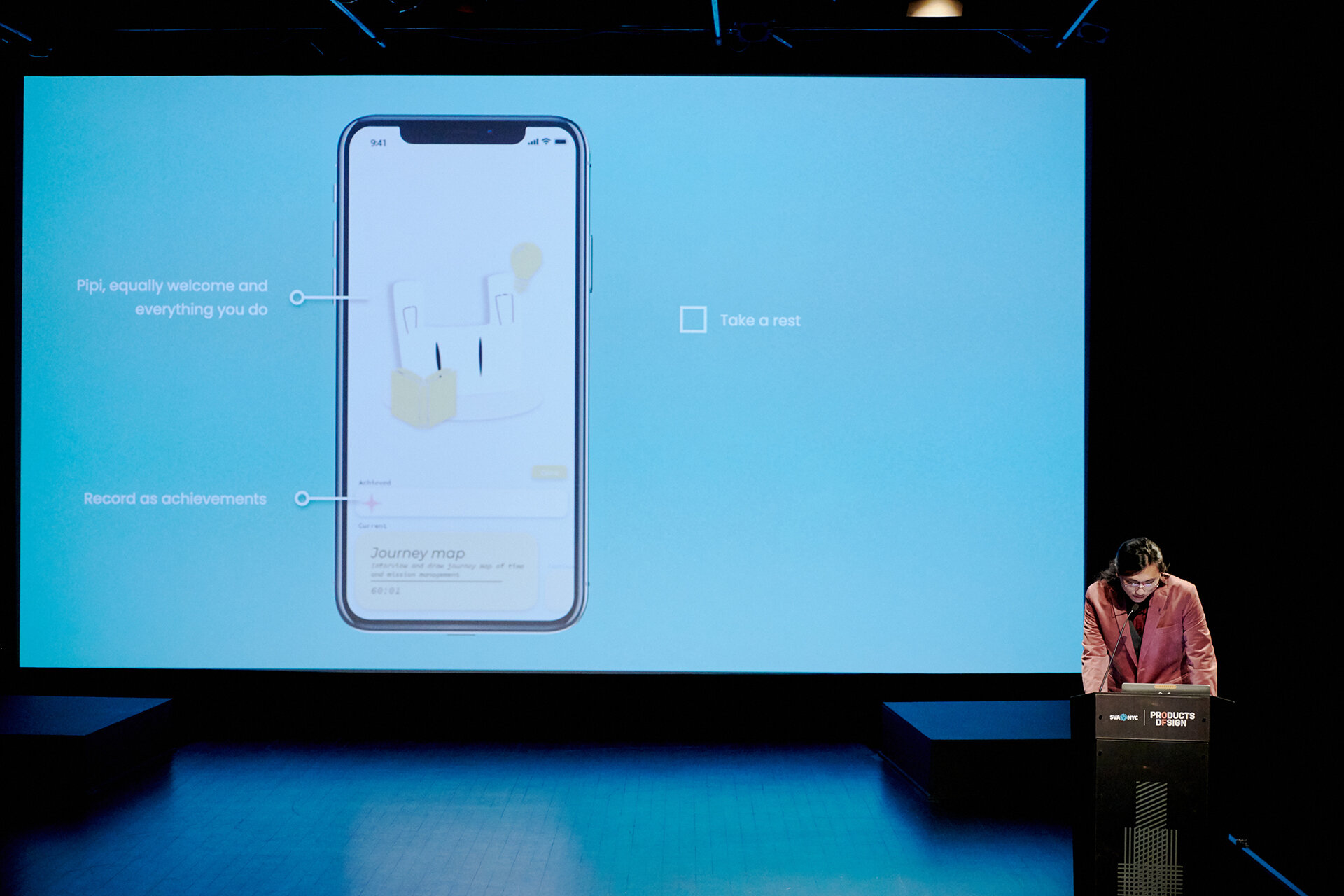
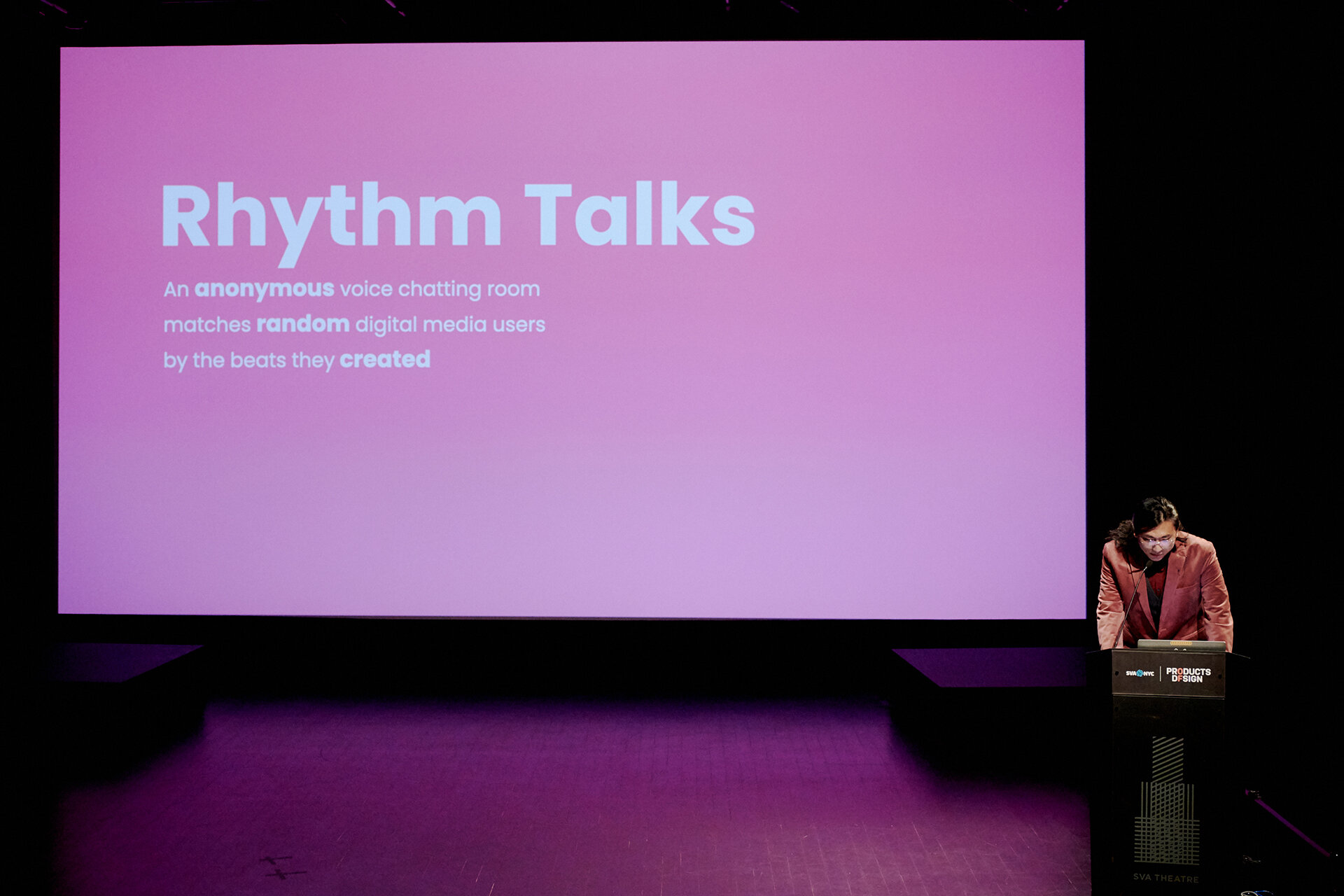
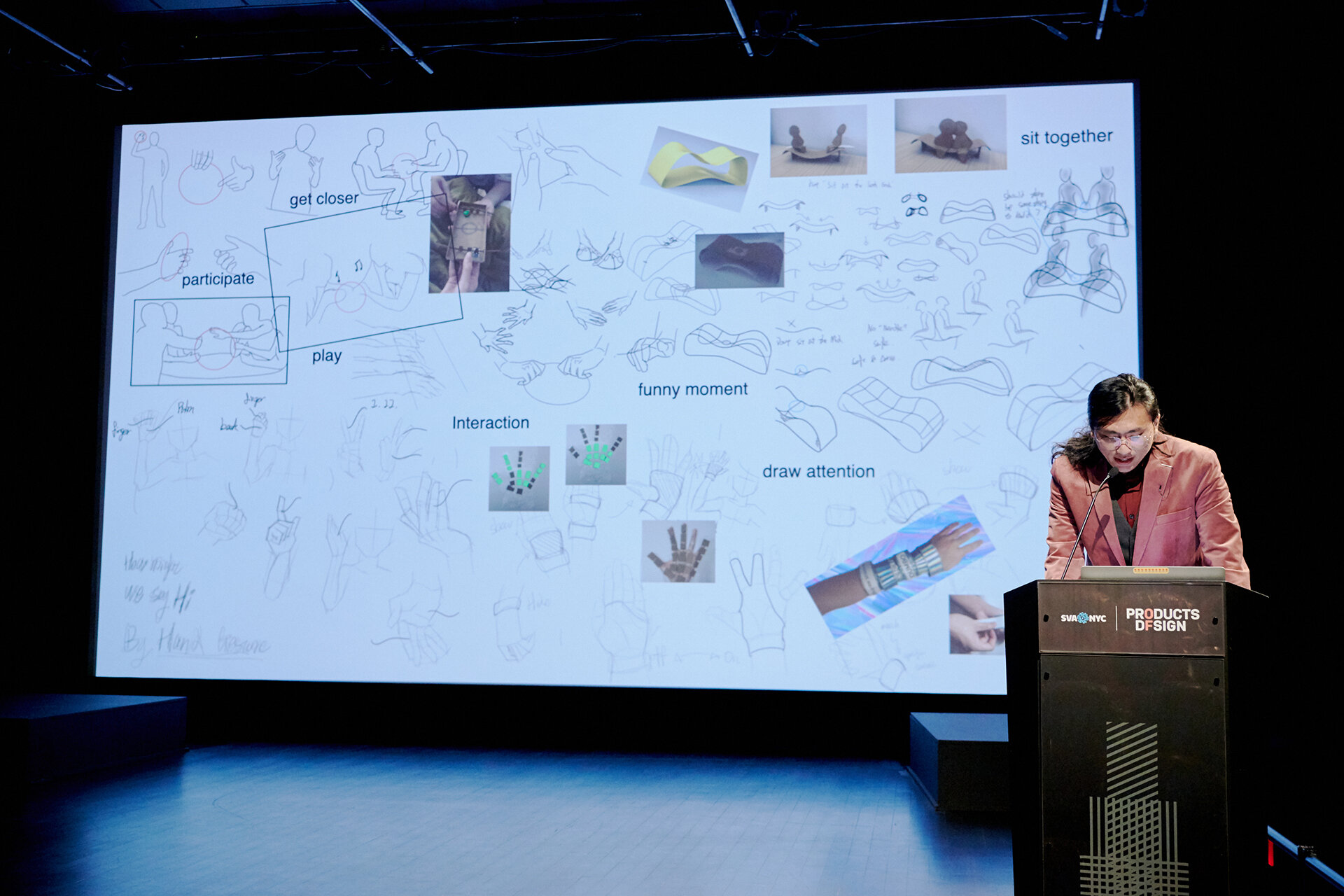

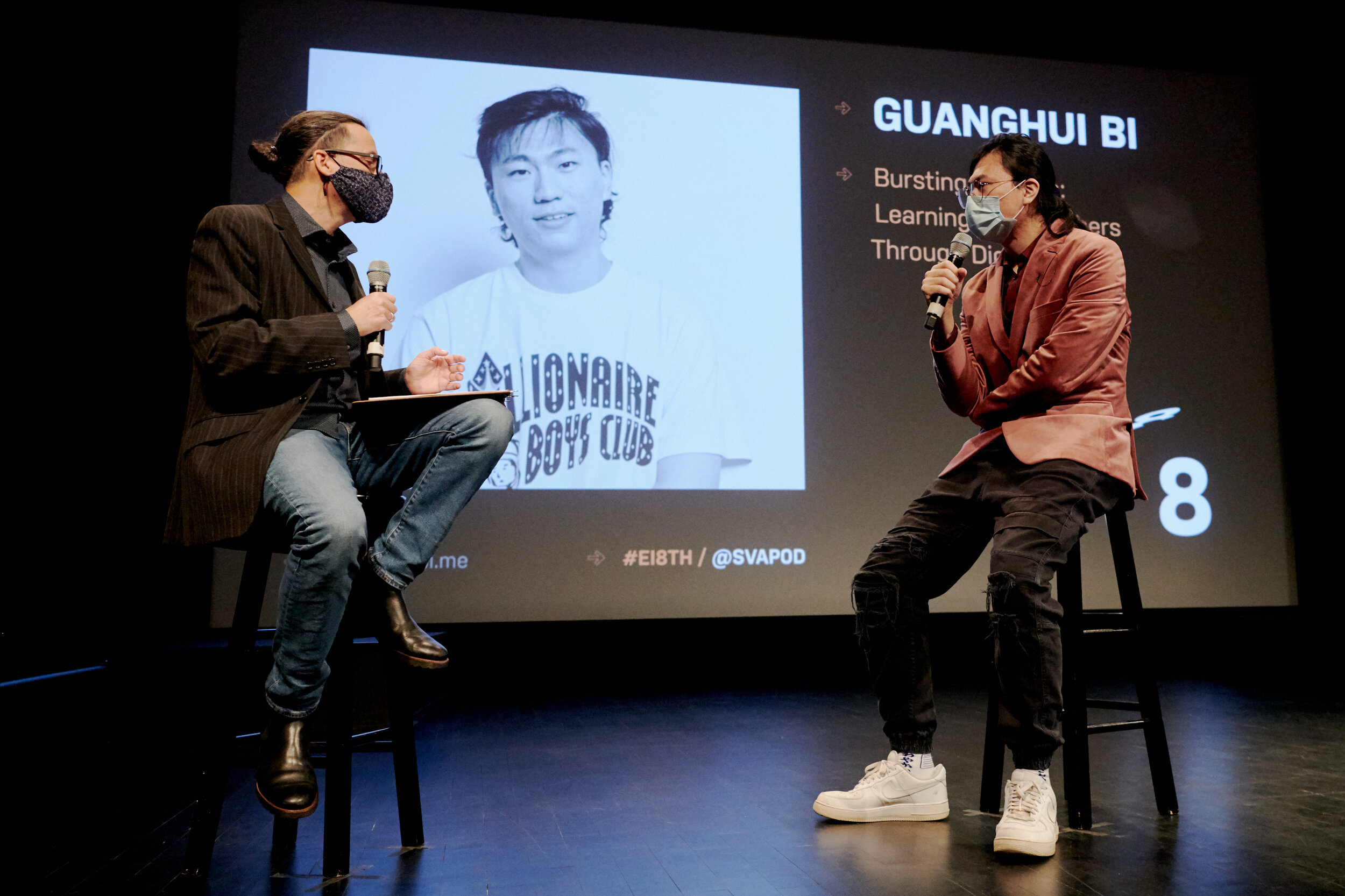

As alternatives to social media, Bi tries to seek other outlets for short-term communication and interaction. He is especially interested in linking people who typically lack the chance, the will, and the tools to communicate with people outside of their own community. A cycle of research, prototyping, and testing led him to envision various projects in this space, exploring the spectrum of experience design and interaction design.
Pipi
On most existing social media platforms, users become separated from information that disagrees with their viewpoints, different from their interpretations. As a result, It effectively isolates users in their own cultural or ideological bubbles, lowering their means and willingness to communicate with people outside their bubbles. Targeting this problem, Bi prototyped Pipi, a social media platform based on to-do lists that connect users to the wide range of possibilities associated with all their activities. Pipi connects users to the uniqueness and diversity of different people and cultures. The target users are active digital media users and young professionals who frequently share their lives on the internet and use productivity apps.
The user starts by typing out a purpose and a mission, then fills out the to-do list with specific activities.
In contrast to other productivity apps, Pipi equally values everything users do. And it records every bit of progress, no matter how small or seemingly unproductive, as an achievement.
Taking a break and making a drink? Yes!
Stopping all your previous plans to enjoy the lovely afternoon instead? Yes!
Uploading and recording various activities during a bit of free time? Of course!
Forcing yourself to focus only on work and nothing else? Absolutely not.
At the end of the day, the user can look back at the diverse activities they did—not just finishing work, but also taking time to relax, pursue their hobbies, and spend time with friends—and be reminded that their lives are complex and layered. Afterward, the user can click on a specific activity to explore how others tackled the same tasks differently. For example, a user could be preparing for the winter—what does preparing for winter look like for other Pipi users?
Bi believes that when we talk about the things we do and love, we are talking about ourselves. This process highlights the uniqueness and diversity of ourselves and our cultures.
Rhythm Talks
On most social media platforms, the content people browse usually stems from a small group of Key Opinion Leaders (influencers), celebrities, or people the user is personally familiar with. The voices and the experiences of everyday people living everyday lives are missing. Bi wants to design interactions that encourage communication among people who don't usually meet. Thus, He envisioned Rhythm Talks. It's an anonymous chat room that matches random users based on the beats they create.
Let’s walk through how Rhythm Talks works: Each day, users can make new profiles reflecting how they feel, and can anonymously share news from their daily lives.
Then users can each create a beat, and match to three other users based on the music style (tempo, tones, tracks, etc.).
Each member's beat contributes to the quartet, and they get to see each other's shared news. Users may play with the beats, toy with cute emojis, or directly chat with each other. Users may play with the beats, toy with cute emojis, or directly chat with each other.
Then, another engaging interaction for the grand finale: It's time to name the band. One word is drawn from each member to create the band name. Users are no longer four random strangers anymore. They are the members of "Jumping Pizza Sweet Fly." The lovely interactions create lovely connections.
All collaborations will be saved in users' albums automatically for them to review and to remember. Each time they replay their co-created music, it reminds them of the sociable atmosphere they all shared. Users can also add their collaborators as friends to continually see a variety of fragments of their lives. With Rhythm Talks, users may randomly engage with diverse people and their lives via positive interactions. Through this, they can realize that every stranger has fascinating experiences if users simply care to explore. With Rhythm Talks, Bi wants to create the sense that, when walking on the street, all of the strangers might be our band members.
Joy Tap
Joy Tap is a portable music controller that allows the owner to invite anyone they meet to connect their phone to it. Music plays. The two users can remix the music by simply tapping a button. It is simple, intuitive, and straightforward. They can play music loudly—and laugh, sing, and dance even louder.
During previous explorations, Bi noticed that despite the prevalence and popularity of digital communication in today's world, a true social platform cannot exist until people gather together. In other words, the good old physical places, like parks and cafes, will always be the natural spot for people to meet strangers. Bi asked himself how he might spark interactions among strangers sitting around at a cafe and lead them to converse with each other? He expanded his exploration by widening the spectrum of interactions and broke into the physical world with Joy Tap.
Joy Tap was designed to bring people close together, prompt them to participate and play with each other, and encourage them to share funny moments. It gradually adapted to become a combination of a mobile power bank, speaker, and DJ controller.


















